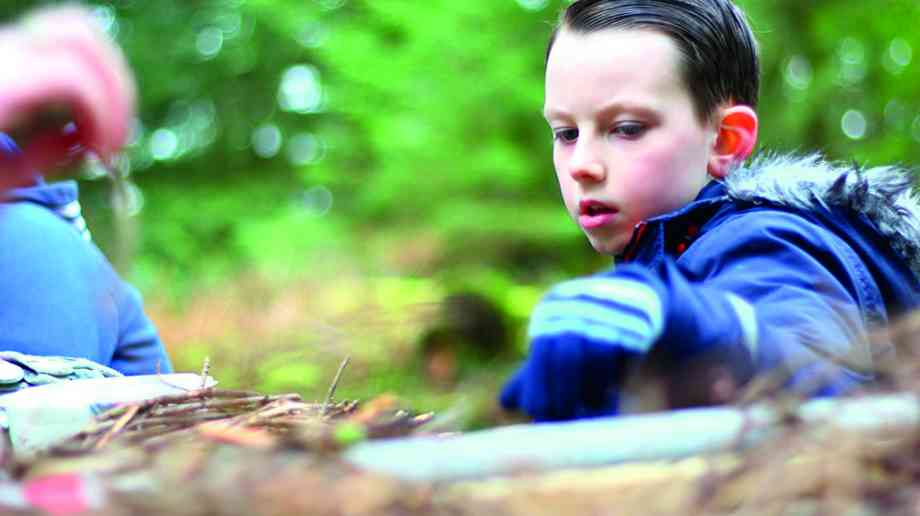
Return on investment from educational visits
Schools are under pressure to balance the books, so it has never been more important to justify the educational benefits of trips and demonstrate value for money. Elaine Skates, chief executive of the Council for Learning Outside the Classroom (CLOtC), examines how this can be done
In 2017, the Association of School and College Leaders (ASCL) launched a twitter campaign #whatwouldyoucut, aimed at highlighting the choices that schools must make to cut a total of £3 billion from their budgets by 2020. Unfortunately, learning outside the classroom activities were among the top suggestions for what would need to be cut: science experiments, music and performing arts events, technology workshops, sports activities, and of course school trips.
Malcolm Trobe, interim general secretary of the Association of School and College Leaders, comments:“Smaller budgets mean fewer staff and this impacts on every area of school activity. What would you cut? School concerts? Educational trips? GCSE courses? Mental health support? Sports events?”
School business leaders are under pressure to balance the books, so it has never been more important to justify the educational benefits of trips and ensure that the maximum educational benefit is derived from every pound spent. This is a golden opportunity to take a strategic look at your learning outside the classroom programme to improve the quality and evaluation of your offer.
Applying the LOtC programme
Sometimes schools fall into the trap of ‘doing what they have always done’ with regard to educational visits and residentials. It is fascinating that the focus and drive for improvement seen across all other aspects of school life is not always applied to a schools’ LOtC (Learning outside the Classroom) programme.
A first step in ensuring you are maximising your LOtC return on investment is to take a step back and look at what you are trying to achieve for your pupils and how LOtC opportunities could help support these objectives.
As a starting point ask yourself the following questions: How can learning outside the classroom help deliver the objectives in your school development plan?; What experiences do you want your pupils to have to help them to access the curriculum and expand their horizons? Thinking about SMCS, what experiences do your pupils lack?; What barriers to learning exist in your school and how can learning outside the classroom opportunities help to overcome them? (relationships, mental health, the social environment?); How can learning outside the classroom support the learning of different groups of pupils; And where do your staff lack confidence/experience and how can LOtC support staff CPD?
It will also help if you see your learning outside the classroom as being part of a progressive journey of learning that enables you to build on previous experiences and classroom teaching.
Planning your educational visit
Often planning for an educational visit focuses on practicalities and risk assessment – but remember that learning should always be the starting point.
Our advice is to plan the activities you will undertake with learning outcomes in mind and make sure you work closely with providers and venues to tailor this visit to meet your learning requirements.
You may also consider wider curriculum outcomes – for example around personal development or across different subject areas in order to help you derive the maximum benefit from the visit.
Possible learning outcomes you may want to focus on include subject specific knowledge and skills and improved attitudes to learning.
Personal development, such as resilience, confidence, independence, or teamwork is another positive outcome, as well as improving knowledge and understanding of different faiths, cultures or socio economic groups. Improved physical or mental health and improved relationships are further benefits to aim for.
Remember to consider how the visit links to classroom teaching and consider how you can build on the learning from the visit back at school.
All venues holding the LOtC Quality Badge will be able to tailor the visit to meet your learning objectives and the individual needs of your learners so don’t be afraid to start a dialogue with your provider rather than settling for ‘off the shelf programmes’.
Choosing a venue or provider displaying the LOtC Quality Badge will give you assurance that the provision is off good educational quality and that risk is effectively managed. It will also help you reduce paperwork as most local authorities and many academy employers require fewer checks before signing off the visit if you are using a LOtC Quality Badge holder.
Evaluating your impact
Evaluation is an important part of measuring the success of any learning intervention, but many schools do not evaluate the impact of their educational visits or residentials, and this can prevent the effective development of learning outside the classroom programmes.
Learning Away’s 2017 report The State of School Residentials in England showed that there was some ambivalence amongst schools in relation to using a structured approach to evaluation, with only two-thirds agreeing that they had used such an approach for their Summer and Autumn residentials.
Evaluating your educational visits will help you to understand what works, what doesn’t work and make improvements but will also help you justify the costs of future trips.
Reflective learning is a way of allowing participants to step back from their learning experience to help them develop critical thinking skills and improve on future performance by analysing their experience, so building in time for reflection will also help you derive the maximum benefit from your educational visit.
There are some useful evaluation resources case studies on the Learning Away website: www.learningaway.org.uk.
Low and no cost options
There are many ways of building low cost or no cost options into your learning outside the classroom programme to supplement your trips and residentials further afield.
By making the learning outside the classroom opportunities more frequent, continuous and progressive will increase your impact overall. Think about the opportunities close to home.
John Golding of Torpoint Community College, who took part in the Natural Connections project, said: “There is no doubt in my mind that outdoor learning is sustainable in the long term at our college. Developing outdoor learning has cost us very little financially. We developed all of the resources and activities ourselves which meant that they grew organically from the work teachers were already doing in the classroom.
“Going outside wasn’t an add-on extra; if outdoor learning would improve the quality of what you were doing with the students and help them understand – go outside. If it won’t do those things, stay in the classroom. To give a comparison, last year we spent almost as much on providing our staff with tea, coffee and milk as we did on outdoor learning.”
So next time a member of staff tells you that the purpose of an educational visit is to ‘have fun’, challenge them to put a bit more thought into the educational value that the visit will have. Fun is the given, but impactful learning usually takes a little bit more planning.
The Council for Learning Outside the Classroom (CLOtC) is the national charity for learning outside the classroom, supporting schools to overcome the barriers & integrate more LOtC into the curriculum.
Further Information:Latest News
19/12/2025 - 09:54
The Education Committee has expanded its ongoing inquiry into the early years sector to examine how safeguarding can be strengthened in early years settings.
18/12/2025 - 09:25
The UK will be rejoining the Erasmus programme in 2027, following a package of agreements with the EU.
17/12/2025 - 09:31
Ofqual has fined exam board Pearson more than £2 million in total for serious breaches in three separate cases between 2019 and 2023 which collectively affected tens of thousands of students.
16/12/2025 - 09:19
The average funding rates will increase by 4.3% for under 2s, and by almost 5% for 3-and-4-year-olds.
15/12/2025 - 10:30
Local colleges are set to receive £570 million in government funding to expand training facilities in areas such as construction and engineering.







